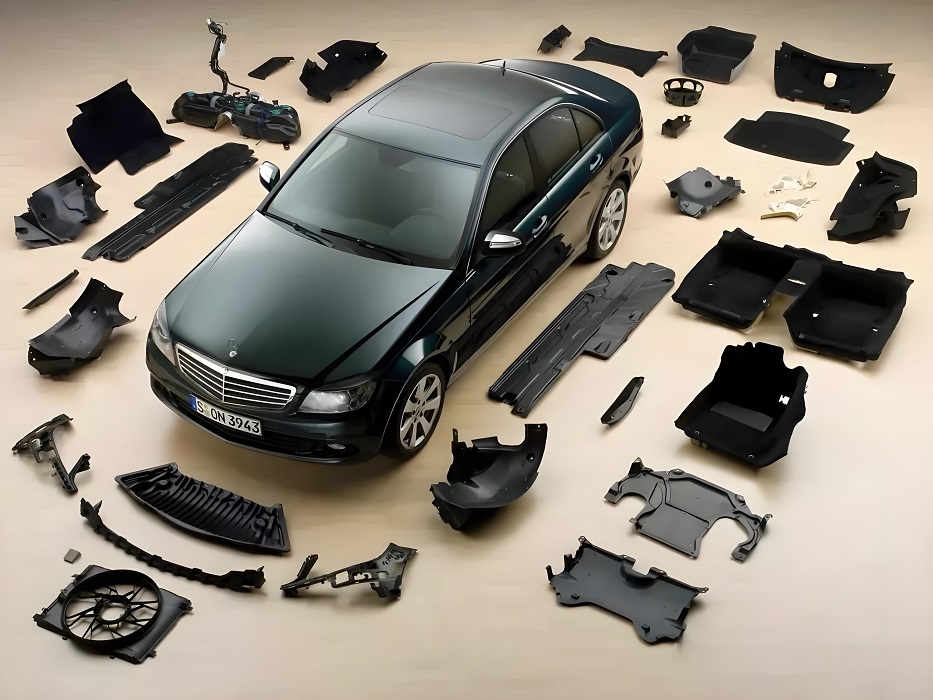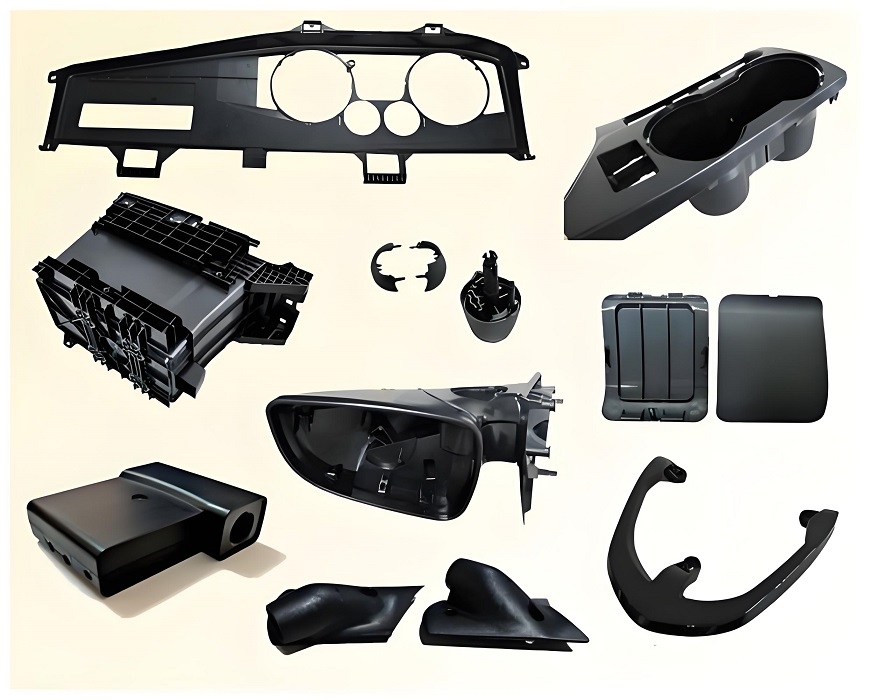Vehicle

Resin material types of automotive plastic parts:
Bumper: commonly made of polypropylene (PP), polycarbonate/polybutylene terephthalate alloy (PC/PBT) or reactive polyurethane (RIM), with both lightweight and energy absorbing cushioning propertiesBelt pulley/filter housing: High temperature resistant nylon (PA6/PA66)
Integrated design: For example, the PP dashboard body can be injection molded with complex structures in one go Safety improvement: The energy absorption effect of the bumper is 40% higher than that of metal.
Some high-end models use carbon fiber reinforced plastic (CFRP) for the hood/roof, further achieving lightweighting.
Interior Parts:
Instrument Panel (IP) / Dashboard;Instrument Cluster Bezel/Housing;Center Console;Center Stack Panel;HVAC Vents/Ducts;Glove Compartment Door/Box;Door Panels/Trim Panels;Door Handle Bezels/Trim (Interior);Armrests (Door & Center Console);Map Pockets (Door);A-Pillar Trim;B-Pillar Trim;C-Pillar Trim;Quarter Panel Trim (Interior);Headliner Substrate;Overhead Console;Sun Visors;Seat Back Panels;Seat Side Shields/Bolsters;Seat Tracks/Covers;Headrest Guides/Covers;Kick Panels;Scuff Plates/Sill Plates;
Cup Holders:Switch Bezels;Steering Wheel Components;Airbag Covers/Housings;Floor Console;Trunk/Cargo Area Trim;
Exterior Parts (Body & Trim):
Bumper (Front & Rear);Bumper Energy Absorber/Foam;Bumper Grilles/Air Intakes;Radiator Grille;Wheel Arch Liners/Fender Liners;Body Side Molding/Cladding;Rocker Panel Covers/Side Sills;Door Handle Bezels/Trim (Exterior);Mirror Housings/Covers;Spoilers/Wings;Chassis Fairings/Aero Covers;Fuel Filler Door;Emblems/Badges;Light Housings/Lenses: Headlights (reflectors, lenses, bezels), taillights (lenses, housings), fog lights;Windshield Cowl/Cowl Grille;
Underhood/Engine Bay Parts:
Air Intake Ducts/Resonators;Air Filter Box/Housing;Radiator End Tanks;Coolant Expansion Tank/Reservoir;Windshield Washer Fluid Reservoir;Battery Cover/Tray;Fuse Box Cover/Housing;Engine Cover;Fluid Caps (Oil, Coolant, Washer);Electrical Connectors/Housings;Battery Casings (for Hybrid/EV);
Underbody Parts:
Fuel Tank;Fuel Tank Shields/Protectors;Splash Shields/Underbody Covers;Heat Shields;Stone Guards;
Other Components:
Wiper Arms/Blades;HVAC Blower Housings;HVAC Evaporator/Heater Cores Housings;Wiring Harness Conduits/Loom;Reservoirs (Brake Fluid, Power Steering Fluid);Bushings/Isolators.
 This list covers the vast majority of plastic components found in modern automobiles, highlighting how extensively plastics are used throughout the vehicle for weight reduction, cost efficiency, design flexibility, and corrosion resistance.
This list covers the vast majority of plastic components found in modern automobiles, highlighting how extensively plastics are used throughout the vehicle for weight reduction, cost efficiency, design flexibility, and corrosion resistance.